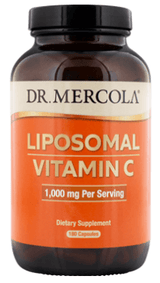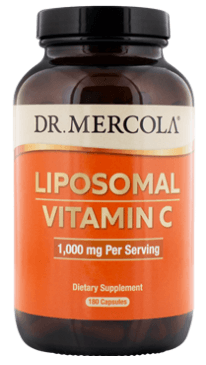Top 10 Chronic Conditions and Illnesses


Related products
Chronic Conditions and Illnesses
Chronic health issues represent prolonged medical concerns, which do not have a clear solution and last throughout someone's life or at least for a few months. These conditions are long-lasting, necessitating regular medical supervision and potentially hindering day-to-day tasks. Their symptoms vary, ranging from stability to occasional intensification or gradual worsening. Many individuals with such ailments grapple with ongoing discomfort, the intricacies of healthcare procedures, potential societal misconceptions, financial burdens from treatment or decreased earnings, and the emotional toll of enduring a lasting illness. Embracing a nutritious diet, partaking in suitable exercises, and preserving social ties uplift one's general health.
1. Alcohol Abuse
Alcohol abuse, often termed alcoholism or alcohol-related disorder (ARD), denotes a persistent health issue marked by an incapability to regulate or halt alcohol intake, leading to negative societal, work-related, or health impacts. This complex disorder comprises both bodily and mental elements.
Origins: Alcohol misuse's roots are diverse, arising from genetic, external, mental, and societal influences. Stressful surroundings, past traumas, societal impacts, and uncomplicated alcohol accessibility foster the onset and perpetuation of alcohol misuse. Some consume alcohol to deal with stress, sadness, or other psychological health challenges.
Prevalence: Globally, alcohol misuse is widespread, affecting countless individuals. The World Health Organisation states that alcohol results in over 3 million deaths each year. It is one of the main reasons for avoidable sickness and death in numerous countries.
Genetic Factors: Data implies a hereditary inclination towards alcoholism. Research on twins and kin groups shows that those with alcoholic family members face increased alcoholism risks. However, genes are merely a part of the equation; external conditions and individual decisions are vital.
Consequences: Alcohol misuse outcomes are physical, mental, or societal. Continuous alcohol intake causes liver issues like cirrhosis, heart and stomach problems, and diminished immunity. Mentally, one faces mood disorders, worry, cognitive issues, and heightened suicide risk. Societally, it causes relationship rifts, unemployment, monetary difficulties, and legal troubles.
Pain Association: Excessive alcohol use leads to physical discomfort. Conditions like liver harm, gastritis, and pancreatitis, often related to overconsumption, are painful. Also, withdrawing from alcohol causes severe pain symptoms like migraines, muscular discomfort, and heightened sensitivity.
Pain Alleviation: Easing alcohol-related pain largely hinges on its origin. Withdrawal-induced pain is treated with certain drugs under a doctor's guidance. General pain relievers should be cautiously administered, as they worsen liver conditions in alcohol misusers.
Therapy: Alcohol misuse treatment usually merges medical and behavioural methods. Detoxification, preferably under medical observation, is the initial step. Subsequent steps include behavioural therapy, medicines, psychological health aid, and communal groups. An all-encompassing method addressing both physical and mental aspects is vital for healing.
Prevention: Measures to prevent alcohol misuse encompass raising awareness about the dangers of excessive drinking, limiting youth's alcohol accessibility, and early support for susceptible individuals. Creating supportive surroundings and imparting coping skills are instrumental in thwarting alcohol misuse.
2. Alzheimer's Disease and Related Dementia
Alzheimer's disease (AD) and other cognitive deficits associated with ageing are chronic neurological illnesses that significantly impact the lives of affected individuals. Individuals experiencing this condition are distinguished by a progressive deterioration in cognitive abilities, including memory impairment and an inability to carry out routine activities. Consequently, they become entirely reliant on others and experience a reduced standard of living.
Alzheimer's disease is the prevailing kind of dementia, including around 60-80% of the total cases of dementia. The condition is distinguished by the deposition of amyloid plaques and tau tangles within the brain, ultimately resulting in neuronal demise. Nevertheless, dementia is a more comprehensive classification of neurological illnesses encompassing a range of memory, cognition, and behavioural impairments, of which Alzheimer's disease represents only one specific subgroup.
The aetiology of Alzheimer's disease and associated cognitive problems remains enigmatic. The aetiology of this phenomenon is thought to involve a multifaceted interaction between genetic predisposition, environmental influences, and individual lifestyle choices. Risk factors encompass several variables, such as increasing age, a familial predisposition to the ailment, and specific genetic variations. Moreover, some medical disorders such as heart disease, diabetes, hypertension, and variables like head injuries can heighten the vulnerability to neurodegenerative illnesses.
Dementia poses a substantial public health challenge in the United Kingdom. Approximately 850,000 individuals are expected to reside with dementia, with Alzheimer's disease being the prevailing subtype. The aforementioned numerical value is anticipated to surpass one million by 2025 due to a growing elderly demographic and an upward trend in life expectancy.
The function of genetics is of considerable importance in the development and progression of Alzheimer's disease. Certain genetic anomalies, including mutations in the APOE ε4 allele, have been identified as risk factors. Nevertheless, the presence of a familial lineage associated with Alzheimer's disease, although heightening the susceptibility, does not provide an absolute assurance of the manifestation of the condition. Alzheimer's disease is commonly attributed to hereditary, environmental, and behavioural factors, particularly in cases that manifest in later stages of life.
Alzheimer's disease and other cognitive illnesses significantly impact an individual's cognitive capacity and ability to carry out daily activities. The early signs frequently include memory impairment, the tendency to misplace items, and challenges executing everyday activities. As the disease advances, individuals undergo cognitive impairment, emotional instability, challenges in interpersonal communication, and a deterioration in their capacity for self-care. In the end, it becomes imperative to provide round-the-clock surveillance and care.
The evidence indicates that adopting a healthy lifestyle is associated with a decreased likelihood of developing Alzheimer's. These measures encompass adherence to a well-balanced dietary regimen, consistent participation in physical exercise, maintaining an optimal body mass index, and avoiding both smoking and excessive alcohol intake. Moreover, engaging in brain-stimulating activities, such as reading, solving puzzles, and participating in social interactions, significantly promote cognitive well-being and safeguard against cognitive deterioration.
Alzheimer's disease and associated cognitive deficits are intricate and formidable neurological conditions that have a significant impact on a global scale, impacting millions of individuals. Although the discovery of a definitive treatment for these disorders remains elusive, continuous research efforts and the adoption of a comprehensive strategy to care, encompassing pain management and promoting a healthy lifestyle, provide a glimmer of hope for individuals afflicted by these ailments. Through ongoing endeavours, we aim to enhance the overall well-being of persons impacted by Alzheimer's and other cognitive diseases.
3. Arthritis (Osteoarthritis and Rheumatoid)
Arthritis, a category of joint-related ailments, comprises a diverse array of conditions exceeding 100. The phrase in question is commonly employed to clarify matters about the interconnection of joints and the resultant sensations of discomfort. The enormous influence of this phenomenon on individuals is evident. There are two commonly observed manifestations of this condition, osteoarthritis (OA) and rheumatoid arthritis (RA), which are categorised as types of arthritis yet possess distinct characteristics and causes.
Osteoarthritis (OA), sometimes degenerative arthritis, is characterised by the progressive deterioration of articular cartilage, mainly impacting joints such as the knees, hips, hands, and spine. On the other hand, rheumatoid arthritis (RA) is classified as an autoimmune condition in which the immune system erroneously directs its attack towards the synovial linings of the joints, leading to inflammation and the possibility of subsequent joint impairment.
Arthritis is a prominent contributor to pain and disability within the United Kingdom, as the National Health Service (NHS) states. Rheumatoid arthritis (RA) impacts a population exceeding 400,000 individuals, whereas osteoarthritis (OA) prompts approximately 8.75 million individuals to pursue medical intervention.
Arthritis substantially impacts an individual's quality of life due to the presence of pain, reduced range of motion, inflammation, and joint stiffness. As the progression of these symptoms intensifies, it leads to permanent joint damage and deformities. The debilitating pain associated with these illnesses often poses significant challenges to individuals' daily functioning and a substantial risk to their mental well-being. Treating arthritic pain often involves using pharmacological interventions, physical therapy engagement, and lifestyle adjustments.
Non-steroidal anti-inflammatory drugs (NSAIDs), analgesics, and disease-modifying anti-rheumatic drugs (DMARDs) are commonly prescribed therapeutic interventions for arthritis, specifically for individuals diagnosed with rheumatoid arthritis (RA). Joint replacement surgery may be necessary in cases of a severe condition. The term "preventive measures" encompasses a diverse array of strategies, including maintaining a healthy body weight, regular engagement in physical exercise, implementing injury prevention techniques, and promptly identifying and resolving issues. It is imperative to comprehend that rheumatoid arthritis (RA) and osteoarthritis (OA) lack a definitive remedy despite therapeutic interventions for symptom management.
"Arthritis" encompasses a broad spectrum of joint disorders that significantly impact individuals afflicted. Enhancing the quality of life and reducing pain and impairment for individuals impacted by these conditions remain paramount as advancements in research and medical therapies progress. Even with the continuous pursuit of improved therapies and a potential remedy, the predominant approach to managing arthritis continues to hinge upon a holistic strategy encompassing medical intervention, physical therapy, and modifications to one's lifestyle.
4. Asthma
Asthma, an enduring respiratory disorder marked by airway inflammation and constriction, presents recurring episodes, showcasing manifestations like wheezing, superficial breathing, chest constriction, and coughing. The precise origin of asthma remains an enigma, yet it is widely held to stem from a multifaceted interplay of genetic and environmental elements. Typical catalysts for asthma encompass allergenic agents such as pollen and dust mites, respiratory infections, exposure to frigid air, physical exertion, smoke, and certain medications. The existence of a genetic predisposition for asthma is beyond dispute, with individuals possessing a familial history of asthma or other allergic disorders confronting an elevated susceptibility.
Asthma significantly influences a substantial segment of the United Kingdom's populace. Asthma UK estimates propose that approximately 5.4 million individuals are currently undergoing treatment for this ailment. This translates to about 1 in every 11 juveniles and 1 in every 12 adults grappling with the challenges of asthma. The repercussions of this ailment on an individual's existence are profound, as the severity of asthma exacerbations varies, with specific episodes necessitating hospitalisation.
While asthma itself does not directly give rise to discomfort, the frequent bouts of coughing and chest constriction accompanying it leads to sensations of discomfort or tenderness in the chest and upper back. To alleviate this discomfort and manage the symptomatic expressions, inhalable bronchodilators like salbutamol are commonly administered to induce swift relaxation and dilation of the airways. Furthermore, inhaled corticosteroids, epitomised by beclometasone, are employed as a prophylactic measure by curtailing inflammation and forestalling asthma episodes.
Identifying and circumventing individual triggers hold paramount significance in managing and pre-emption asthma. Routine monitoring of pulmonary function and rigorous adherence to prescribed medications are imperatives in regulating this ailment. Albeit asthma lacks a definitive remedy, individuals lead lives characterised by normalcy and vitality with prudent management. Dissemination of knowledge and consciousness, harmonised with a tailored asthma action blueprint, constitutes pivotal elements in deterring severe exacerbations and enhancing the comprehensive quality of life for those grappling with this condition.
Asthma, a chronic respiratory affliction, introduces complexities for affected individuals and healthcare practitioners. Although the precise genesis remains elusive, it is postulated to stem from genetic and environmental factors convergence. The management of asthma necessitates the identification of triggers, the utilisation of medications to regulate symptomatic expressions, and the perpetuation of systematic monitoring to forestall exacerbations. With a well-rounded approach, individuals with asthma savour lives brimming with fulfilment, underscoring the significance of enlightenment and education in pursuing this objective.
5. Atrial Fibrillation
Atrial fibrillation (AFib) is an enduring cardiac arrhythmia distinguished by an irregular and often swift heart rate. It ensues from aberrant electrical impulses within the atria, the heart's upper chambers, yielding a tumultuous rhythm. This condition escalates the likelihood of stroke, heart failure, and other cardiovascular predicaments.
Origins
AFib's genesis emanates from diverse sources, encompassing:
- Elevated blood pressure
- Coronary artery maladies
- Valvular heart conditions
- Hyperthyroidism
- Exorbitant alcohol consumption
- Pulmonary ailments
- Past cardiac surgical procedures
Individuals who inherit AFib traces from their families are at a greater risk of developing the condition than those who do not have a family history of the condition. The atrial fibrillation irregularity (AFib) is the most common type of abnormal cardiac rhythm, affecting over one million people in the United Kingdom. As the general population gets older over the next half century, this number is expected to increase by a factor of two.
The symptoms of atrial fibrillation include palpitations, light-headedness, shallow breathing, and fatigue. It takes place occasionally in the absence of any symptoms, which is why periodic medical examinations are required. Because AFib causes atrial blood stasis, the likelihood of clot formation increases, which can lead to a stroke if left untreated.
Pain and Alleviation: AFib seldom begets discomfort, although some encounter chest unease or pain due to circulatory constraints. Immediate medical attention proves indispensable should chest pain manifest. Non-prescription pain mitigators provision transitory respite, yet expert counsel is imperative.
Therapeutics, Preclusion, and Remedy: AFib therapeutics strive to reinstate regular heart rhythm, curtail stroke risk, and mitigate symptoms. This encompasses:
- Pharmaceutical agents such as beta-blockers or calcium channel blockers
- Anticoagulant medications for clot deterrence
- Catheter ablation, an intervention to ablate or obliterate abnormal impulse-emanating tissue
- Lifestyle alterations, inclusive of blood pressure regulation, weight management, and alcohol intake curtailment
Preventative methodologies encompass risk factor governance like hypertension, upholding a salubrious lifestyle, and regular medical evaluations. While interventions manage AFib and temper its ramifications, a definitive panacea remains elusive. Apt administration and timely interventions are paramount in bolstering life calibre and attenuating associated hazards.
6. Autism Spectrum Disorder (ASD)
Autism Spectrum Disorder (ASD) represents a multifaceted neurodevelopmental ailment that has attracted burgeoning scientific scrutiny and societal discussion. Its definitional boundaries encompass an array of symptoms primarily undermining social interaction and communication competencies, often accompanied by repetitive conduct or specialised interests. The notable aspect of ASD lies in its diversity, encapsulated within the term "spectrum." This aspect acknowledges the nuanced variability in the severity of symptoms and the functional capacities of individuals affected.
The etiological foundations of ASD remain elusive to complete scientific comprehension, although the prevailing consensus suggests a multifaceted origin. Instead of seeking a singular genetic instigator, the reality presents a much more intricate scenario. No individual gene stands definitively as the source of ASD. Instead, numerous genetic mutations and variations link to the ailment, suggesting a polygenic risk paradigm. Environmental factors frequently compound these genetic predispositions. A range of risk elements, including parental age at conception, birthing complications, and prenatal exposure to particular drugs or infections, further amplifies an individual's vulnerability to ASD.
In the United Kingdom context, the prevalence of ASD presents both compelling and alarming statistics. Statistical approximations propose that roughly 1 in 100 individuals in the UK reside within the autism spectrum. This corresponds to an astonishing populace of over 700,000 individuals, elevating ASD from a simple medical curiosity to a significant public health quandary that necessitates concerted dedication to research, policy formulation, and healthcare provisioning.
The phenomenological occurrence of ASD displays non-uniformity, impacting individuals in many manners. Some ASD individuals confront substantial communication hindrances, potentially never acquiring functional spoken language. Conversely, others manifest verbal adeptness and the capability to lead moderately independent lives. Common traits among most ASD individuals encompass challenges in deciphering social cues and emotional expressions, augmented sensitivity to sensory stimuli, and a preference for predictability, routine, and organised surroundings.
While ASD does not typically inflict physical agony, it manifests in heightened sensory sensitivities leading to discomfort or distress. For example, specific ASD individuals perceive bright lights or loud sounds as disorienting or distressing. Consequently, pinpointing particular sensory triggers and devising an accommodating environment is vital in enhancing the quality of life for those impacted.
At the present juncture, no curative intervention exists for ASD. Nonetheless, various treatment paradigms potentially augment functional outcomes and overall well-being. These interventions encompass behavioural therapies, such as Applied Behaviour Analysis, and speech and occupational therapy to enhance communication and life competencies. Educational support is pivotal in equipping ASD individuals with the tools required for academic triumph. Pharmacological interventions, mainly targeting comorbid conditions like anxiety or attention-deficit issues, find typical applications.
Preventing ASD poses a complex challenge, primarily due to the intricate interplay between genetic and environmental factors. While total prevention remains elusive, early identification and intervention profoundly influence the life trajectories of ASD individuals. Early interventions consistently demonstrate their efficacy in enhancing cognitive and social outcomes, thereby assisting ASD individuals in navigating the complexities of life with greater autonomy and fulfilment.
Autism Spectrum Disorder is a neurodevelopmental condition of significant scientific, social, and public health significance. Its multifaceted origins, varied presentations, and intricate therapeutic modalities render it a subject of ongoing research complexity. Despite the absence of a definitive remedy, existing therapies and interventions hold the potential to enrich the lives of those afflicted, underscoring the importance of early identification and tailored interventions. The continual exploration of its underlying mechanisms, prevalence, and management strategies thus remains indispensable for improving lives touched by ASD.
7. Cancer (Breast, Colorectal, Lung, and Prostate)
Cancer, an umbrella term encompassing a constellation of ailments hallmarked by unrestrained aberrant cell proliferation and dissemination, persists as a paramount global health challenge. Amidst the variegated cancer categories, breast, colorectal, lung, and prostate cancers stand out as notably prevalent.
Breast cancer originates in breast cell irregularities, colorectal cancer emerges within the colon or rectal precincts, lung cancer takes root within the pulmonary apparatus, and prostate cancer resides in the male prostate gland. These cancers' genesis is multifaceted and encompasses genetic mutations, lifestyle predilections such as smoking (predominantly implicated in lung cancer), environmental exposures, and hormonal perturbations. While not all cancer types exhibit a direct genetic nexus, those with familial antecedents often encounter escalated susceptibility, especially within breast and colorectal cancers.
Within the United Kingdom, these cancers wield substantial prevalence. Cancer Research UK reports breast cancer as the most frequently diagnosed, entailing approximately 55,000 fresh instances annually. Lung cancer accounts for about 47,000 new diagnoses, colorectal cancer for approximately 42,000, and prostate cancer for around 49,000. Collectively, they constitute a substantial segment of the cancer affliction.
The repercussions of these cancers upon an individual are profound, casting shadows over both physical well-being and emotional equilibrium. Symptoms manifest diversely contingent on the cancer subtype and its developmental stage, potentially involving anomalies such as lumps, unaccounted weight loss, chronic cough, and bowel habit modifications. Discomfort often surfaces, particularly in advanced phases or if metastasis to bones or other organs materialises. Palliative measures encompass pharmaceutical agents, radiation therapy, or nerve-blocking interventions.
Therapeutic avenues diverge depending on cancer type and stage, encompassing surgical procedures, chemotherapy, radiation therapy, hormone interventions, and targeted pharmacological regimens. Preventative approaches incorporate lifestyle adjustments such as smoking cessation, a balanced dietary regimen, regular physical activity, and curtailing exposure to established carcinogens. Though substantive strides have been made in cancer management, a conclusive panacea spanning all stages and variations remains elusive. However, prompt interventions engender remission in numerous patients to lead enriching lives.
8. Chronic Kidney Disease (CKD)
Chronic Kidney Disease (CKD) represents a protracted ailment wherein the kidneys gradually lose their efficiency in filtering waste and surplus fluids from the bloodstream, leading to the accumulation of these substances within the body.
Aetiologies
- Diabetes: A prominent CKD precursor, as elevated blood sugar levels inflict gradual renal damage.
- High blood pressure: Exerts strain on the kidneys' minuscule blood vessels.
- Glomerulonephritis: Incites inflammation in the kidney's filtration units.
- Polycystic kidney disease: A hereditary condition provoking cyst formation within the kidneys.
- Prolonged use of particular medications, e.g., non-steroidal anti-inflammatory drugs (NSAIDs).
- Recurrent kidney infections.
Certain CKD forms, such as polycystic kidney disease, display genetic linkage. Furthermore, individuals boasting familial CKD histories confront augmented susceptibility. Within the United Kingdom, it is projected that 1 in 10 people harbour CKD, with numerous remaining oblivious to their condition. This translates to millions, with those aged 75 and older facing heightened risk.
Impacts on the Individual: CKD's initial stages manifest asymptomatically. Nevertheless, as the ailment advances, indications encompass fatigue, oedematous ankles, haematuria, and breath shortness. Uncontrolled CKD culminates in kidney failure, necessitating dialysis or kidney transplantation.
Pain Relief and Therapeutics
- Pertinent medications manage CKD-related pain, albeit NSAIDs should be eschewed.
- Management of underlying conditions like diabetes and hypertension proves pivotal.
- In advanced phases, dialysis or kidney transplantation becomes imperative.
Prevention and Remedy: Effective chronic ailment management, a wholesome lifestyle, periodic check-ups, and avoidance of kidney-harming medications are cardinal prophylactic facets. Although CKD management exists, especially for advanced stages, a definite cure remains absent. Timely detection and intervention are paramount to decelerating progression and upholding life quality.
9. Chronic Obstructive Pulmonary Disease (COPD)
Chronic Obstructive Pulmonary Disease (COPD) is an overarching designation encompassing a cluster of lung ailments, including emphysema and chronic bronchitis, that precipitate respiratory impediments. It hinges on chronic inflammation and lung tissue impairment, culminating in constricted air passages.
Origins
- Smoking: The chief COPD risk factor.
- Prolonged exposure to harmful contaminants, encompassing dust, chemicals, and fumes.
- Genetic facets: Occasional genetic deficiencies heighten vulnerability, e.g., alpha-1-antitrypsin deficiency.
- History of recurrent lung infections during childhood.
Though environmental elements wield considerable influence, a genetic predisposition is discernible, with certain families experiencing heightened COPD prevalence. In the United Kingdom, COPD emerges as a momentous public health difficulty. Roughly 1.2 million individuals have garnered COPD diagnoses, making it the nation's second most prevalent lung malady, eclipsed solely by asthma according to the British Lung Foundation.
COPD inexorably deteriorates, inducing indications like persistent coughing with mucus, breath shortness, wheezing, and chest constriction. With ailment progression, even rudimentary tasks such as ambulation or dressing become onerous due to breathlessness. While the core symptoms revolve around respiratory distress, select individuals encounter chest discomfort or unease, particularly during severe exacerbations.
Pain Mitigation and Therapeutics
- Bronchodilators: Pharmaceuticals facilitating airway dilation.
- Steroids: Employed to diminish inflammation.
- Pulmonary rehabilitation: Melding exercise regimens and informative sessions to enhance well-being.
- Oxygen therapy: For severe COPD cases, to augment breathing.
Preventative measures revolve primarily around smoking cessation or abstention. Consistent avoidance of lung irritant exposure and timely detection bolster management. While treatments mollify symptoms and augment life quality, a COPD cure is currently absent. The focus remains on symptom management, exacerbation prevention, and the retardation of ailment progression.
10. Depression
Depression, clinically referred to as Major Depressive Disorder (MDD), materialises as a persistent mental health affliction characterised by an enduring and pervasive sense of hopelessness, diminished interest in activities, and an array of physical and cognitive indications that disrupt an individual's daily functioning. The genesis of depression is intricate, stemming from a mosaic of factors encompassing biological elements such as neurotransmitter imbalances, psychological stressors like traumatic life events or chronic stress, and socio-environmental aspects such as isolation or protracted illness. A genetic inclination toward depression is evident, with those harbouring familial depression histories confronting escalated vulnerability.
Within the United Kingdom, depression constitutes a consequential health dilemma. Approximately 1 in 4 individuals will encounter a mental health disorder annually, with depression featuring prominently among the most prevalent conditions as per Mind, the mental health charity.
Depression's impact on an individual is far-reaching. Beyond emotional manifestations, afflicted individuals grapple with weariness, appetite fluctuations, sleep disruptions, concentration issues, and even bodily discomfort. Indeed, the established association between depression and bodily pain, especially persistent pain ailments, is well-documented. This pain manifests in headaches, joint discomfort, or backaches.
Mitigation of depression-related anguish and other symptoms is attainable via multiple avenues:
- Antidepressant medications, which modulate neurotransmitters.
- Psychotherapy, exemplified by cognitive-behavioural or interpersonal therapy, offers strategies to manage and address underlying causes.
- Lifestyle amendments, including regular physical activity, a balanced dietary regimen, and sufficient sleep, all wielding mood-enhancing potential.
Preventative stratagems encompass early intervention, stress handling, nurturing social bonds, and avoiding alcohol or substance misuse. It is imperative to underscore that while treatments efficaciously manage and resolve depressive episodes for many, depression is recurrent. Continual surveillance, adherence to treatment regimens, and readiness to seek assistance, when necessary, constitute indispensable facets of traversing and managing this intricate condition.
11. Diabetes
Diabetes constitutes an enduring medical malady typified by elevated blood glucose levels resulting from the body's incapacity to produce or employ insulin, a pivotal hormone governing glucose regulation. The two principal diabetes categories are as follows:
- Type 1 Diabetes: An autoimmune disorder where the body erroneously targets and annihilates insulin-producing cells within the pancreas.
- Type 2 Diabetes: Derives from insulin resistance within the body coupled with a concurrent relative insulin insufficiency.
Type 1 diabetes causation remains elusive, though genetic elements and environmental triggers such as viruses are implicated. In contrast, Type 2 diabetes is correlated with genetics, advancing age, obesity, sedentary lifestyles, and specific dietary habits. Within the United Kingdom, diabetes prevalence is cause for concern. Diabetes UK reports that over 4.9 million individuals contend with diabetes, with Type 2 accounting for approximately 90% of cases. Predictions indicate an escalating trend, with an estimated 13.6% of the UK adult populace grappling with diabetes (diagnosed or undiagnosed) by 2030.
An evident genetic connection exists, particularly with Type 2 diabetes. Those possessing a familial diabetes history confront an augmented risk, emphasizing the intricate interplay between genetic predisposition and environmental determinants.
Unmanaged diabetes carries dire consequences. Sustained hyperglycaemia precipitates complications like renal impairment, ocular maladies, neuropathic disorders, and cardiovascular ailments. While diabetes does not explicitly precipitate pain, complications such as diabetic neuropathy usher in distressing manifestations.
To assuage pain and address the ailment itself:
- Vigilant blood glucose oversight and regulation are pivotal.
- Pharmaceuticals, encompassing insulin and oral antidiabetic agents, are prescribed.
- Lifestyle amendments, encompassing a balanced dietary regimen and routine physical activity, serve as foundational elements for management and prevention.
Though treatments proficiently manage diabetes and avert complications, most forms still elude a definite remedy. Type 1 diabetes remains bereft of a known cure, while Type 2 diabetes is occasionally aged or even reversed with substantive lifestyle transformations, notably during the initial phases. Early detection, patient enlightenment, and proactive management are pivotal in navigating this pervasive sickness.
12. Drug Abuse/ Substance Abuse
Substance or drug abuse manifests as a persistent affliction marked by the excessive and detrimental consumption of drugs or substances, culminating in addiction, physical harm, or compromise to one's mental well-being. Substance abuse encompasses an array of substances, including:
- Legal substances: Like alcohol or prescription medications consumed more than prescribed limits.
- Illegal drugs: Such as cocaine, heroin, and synthetic narcotics.
- Over-the-counter medications: Misused for their psychoactive effects.
The origins of substance abuse are intricate, spanning genetic predisposition, peer pressure, emotional turmoil, anxiety, depression, and environmental facets, encompassing socio-economic conditions. Notably, genetics exert an influence; those with familial substance abuse antecedents confront elevated susceptibility. Substance abuse persists as a substantial public health quandary within the United Kingdom. Data from the National Drug Treatment Monitoring System (NDTMS) reveals that roughly 268,251 adults were in contact with drug and alcohol treatment services from 2019 to 2020. Alcohol remains the most abused substance, with around 586,780 adults in England grappling with alcohol dependence.
Substance abuse exerts profound impacts on individuals. Beyond the physical health ramifications, spanning alcohol-related liver disease or smoking-induced respiratory problems, substance abuse engenders compromised mental well-being, strained relationships, fiscal woes, and legal entanglements.
Amelioration of pain and ancillary symptoms associated with substance abuse entails:
- Detoxification: Supervised medical withdrawal from the substance.
- Behavioural therapy: Targeting the psychological facets of addiction.
- Medication: Beneficial for addiction to opioids, tobacco, or alcohol.
- Mental health services: Tailored to address co-occurring mental health disorders.
Preventative methodologies encompass early education regarding the hazards, enhancement of mental health services, and community-centred initiatives. Treatment strives to facilitate substance cessation and reintegration into society's productive fold. Nevertheless, it is imperative to comprehend that recovery from substance abuse constitutes an ongoing process, frequently necessitating multiple interventions and periodic monitoring.
13. Heart Failure
Heart failure denotes a persistent, progressive condition wherein the heart muscle loses its ability to propel blood to efficiently satisfy the body's requisites. This deficiency stems from structural or functional cardiac disorders, resulting in congested or diminished blood flow to vital organs and tissues. Heart failure does not signify a cessation of cardiac function but rather denotes weakened pumping capability.
Predominantly, two heart failure manifestations prevail:
- Systolic Heart Failure (Heart Failure with Reduced Ejection Fraction): Here, the heart's left ventricle falters in contracting typically. Consequently, the heart cannot muster adequate force to propel a sufficient blood volume into circulation.
- Diastolic Heart Failure (Heart Failure with Preserved Ejection Fraction): In this variant, the left ventricle loses its capacity to relax effectively, hampering blood filling during the interbeat resting phase.
The origins of heart failure are myriad, encompassing:
- Coronary artery disease
- Hypertension
- Defective heart valves
- Cardiomyopathy (heart muscle ailment)
- Myocarditis (heart muscle inflammation)
- Congenital heart anomalies
- Persistent maladies such as diabetes, HIV, or thyroid disorders
- Alcohol misuse or substance abuse
In the United Kingdom, heart failure assumes the guise of a substantial healthcare quandary. Statistics from the British Heart Foundation reveal approximately 920,000 individuals grappling with heart failure in the UK. Certain heart disease forms that culminate in heart failure bear a genetic predisposition. Notably, hereditary cardiomyopathies impact the heart muscle. Heart failure's ramifications on individuals are considerable. Symptoms span from weariness, breathlessness, accelerated heartbeat, and persistent cough or wheezing to more severe indications such as oedema in the lower extremities.
Palliation from the agony and ancillary symptoms associated with heart failure entails:
- Diuretics for fluid volume reduction
- ACE inhibitors to augment blood flow
- Beta-blockers for symptom alleviation and heart function enhancement
- Aldosterone antagonists to modulate blood pressure-elevating hormones
- Digoxin to amplify heart muscle contractions
Heart failure management and prevention strategies orbit the rectification of the root cause, encompassing blood pressure regulation, cholesterol mitigation, and diabetes control. Lifestyle adjustments, incorporating a heart-healthy diet, regular physical activity, tobacco abstinence, and stress management, assume pivotal roles. Though treatments efficaciously manage symptoms and retard heart failure progression, complete remission is often elusive. However, surgical interventions such as heart valve replacement or heart transplantation are contemplated in select instances. Consistent health assessments, patient improvement, and adherence to pharmaceutical regimens are indispensable for heart failure patients in optimising their quality of life.
13. Hepatitis B and C
Hepatitis B and C represent chronic liver ailments stemming from the hepatitis B virus (HBV) and hepatitis C virus (HCV). Both maladies precipitate liver inflammation, impeding its optimal functionality. Untreated, they culminate in severe hepatic harm, encompassing cirrhosis, hepatic failure, or hepatocellular carcinoma.
Hepatitis B: This strain manifests as acute or chronic. While some individuals spontaneously clear the infection, others grapple with a persistent affliction. Predominantly, transmission arises via exposure to infectious blood, semen, or other bodily fluids, typically in scenarios like:
- Maternal-child transmission during childbirth
- Unprotected sexual intercourse with an infected person
- Shared usage of needles or syringes
- Receipt of unscreened blood transfusions
Hepatitis C: This strain is chiefly bloodborne, with most infections assuming a chronic course. It is chiefly disseminated through:
- Shared needles or paraphernalia for intravenous drug use
- Healthcare procedures marked by suboptimal infection control
- Unscreened blood transfusions or organ transplants
- Unprotected sexual activity, though this mode carries a considered low risk
In the United Kingdom, the prevalence of these afflictions is substantive. Public Health England posits that approximately 180,000 individuals bear chronic hepatitis B infection, while around 143,000 contend with chronic hepatitis C. Neither hepatitis B nor C exhibits a genetic aetiology, though specific genetic attributes predispose individuals to susceptibility or impact disease progression.
The impact of these ailments on an individual fluctuates. In the initial phases, symptoms assume a non-specific tenor, typified by weariness, nausea, or mild abdominal discomfort. As the disease advances, more conspicuous indications like jaundice (icterus), darkened urine, and persistent abdominal discomfort materialise. Chronic hepatitis induces pain attributable to liver damage or inflammation.
Avenues for pain alleviation and malady management encompass:
- Antiviral drugs aimed at countering the virus and retarding hepatic deterioration
- Persistent monitoring to gauge hepatic function and ailment progression
- Abstaining from alcohol and certain medications with hepatotoxic potential
Prophylactic endeavours for hepatitis B encompass vaccination, which offers effective prophylaxis. For hepatitis C, no vaccine is available, with preventative strategies pivoting to judicious practices such as employing sterilised equipment and abstaining from needle sharing. Prompt detection and therapeutic intervention are pivotal. Although antiviral drugs effectuate hepatitis C cure and modulate hepatitis B infection, they do not invariably forestall protracted ailment sequelae. Consequently, sustained surveillance and lifestyle adaptations prove indispensable for individuals grappling with either condition.
15. HIV/AIDS
Human Immunodeficiency Virus (HIV) is a virus that targets the body's immune system, particularly the CD4 cells crucial for fighting infections. Left untreated, HIV leads to Acquired Immunodeficiency Syndrome (AIDS), severely compromising the immune system. Unlike viruses, the body cannot naturally eliminate HIV, making it a lifelong infection.
HIV is categorised into two main types:
- HIV-1: The most prevalent type responsible for most global HIV infections.
- HIV-2: Less common and primarily found in West Africa.
Causes and Transmission
- Unprotected sexual contact with an infected individual.
- Sharing needles or syringes with an HIV-positive person.
- Receipt of contaminated blood products or organ transplants.
- Transmission from an HIV-positive mother to her child during childbirth or breastfeeding.
In the UK, approximately 105,200 people were living with HIV, with approximately 6,600 unaware of their infection, according to data from Public Health England in 2019. There is no genetic predisposition to contracting HIV, but certain genetic factors influence the rate of disease progression in infected individuals. HIV/AIDS has a profound impact on an individual's health. In the early stages, it presents as flu-like symptoms. As the immune system weakens, susceptibility to opportunistic infections and certain cancers increases. These complications lead to symptoms such as weight loss, night sweats, chronic diarrhoea, and persistent cough. Pain is associated with these complications, particularly in advanced stages.
Pain Relief and Management
- Antiretroviral therapy (ART): The primary treatment for HIV, it helps reduce the viral load, maintain a healthy immune system, and decrease the risk of transmission.
- Over-the-counter pain relievers and specific prescription medications manage complications-related pain.
- Regular medical check-ups to monitor CD4 counts and viral load.
Prevention
- Regular use of pre-exposure prophylaxis (PrEP) for high-risk individuals.
- Consistent and correct condom use.
- Avoiding the sharing of needles or syringes.
- Regular HIV testing for early detection.
While there is no cure for HIV, proper medical care controls it. ART helps lower the viral load, maintain a healthy immune system, and extend the lifespan of those with HIV to near normal. Early detection and treatment adherence are crucial for managing the condition and preventing progression to AIDS.
16. Hyperlipidemia (High cholesterol)
Increased amounts of lipids in the bloodstream, such as cholesterol and triglycerides, characterise hyperlipidemia. The ailment above presents notable health hazards, principally attributable to its correlation with atherosclerosis, the accumulation of lipid deposits in the walls of arteries that precipitate myocardial infarctions and cerebrovascular accidents.
The pathophysiology of hyperlipidemia entails a disruption in the equilibrium between hepatic lipid synthesis and the removal of lipids from the bloodstream. Chylomicrons and Very Low-Density Lipoproteins (VLDL) serve as carriers for the transportation of triglycerides and cholesterol from the liver to various tissues throughout the body. Conversely, High-Density Lipoproteins (HDL) facilitate cholesterol transport in the opposite direction, returning it from the tissues to the liver. Hyperlipidemia occurs when there is an imbalance in the transport systems, either due to excessive production or insufficient clearance.
Several factors contribute to the development of hyperlipidemia:
Dietary Habits: Consuming foods rich in saturated fats and cholesterol.One contributing factor to the development of unfavourable cholesterol levels is a lack of physical activity, which leads to sedentary lifestyles. This sedentary behaviour has been found to elevate levels of low-density lipoprotein (LDL), commonly referred to as "bad cholesterol," while simultaneously reducing levels of high-density lipoprotein (HDL), known as "good cholesterol."
- Genetics: Familial hypercholesterolemia is an inherited genetic condition with abnormally elevated cholesterol levels.
- Additional medical conditions, including diabetes, renal disease, and hypothyroidism, are contributing factors.
Certain medications, such as corticosteroids and certain types of birth control pills, have been found to increase lipid levels.
Hyperlipidaemia is a matter of considerable concern in the United Kingdom, characterised by a notable prevalence of elevated cholesterol levels among the adult population. The presence of a discernible hereditary element is particularly evident in familial hypercholesterolemia; nonetheless, for most individuals, lifestyle and environmental factors significantly contribute to the condition.
The primary consequences of hyperlipidaemia manifest predominantly over an extended duration. Elevated lipid levels have been found to contribute to the development of arterial plaques, which can impede blood circulation and potentially result in the onset of coronary artery disease, strokes, and peripheral artery disease. Although hyperlipidaemia is not typically associated with pain, its consequences might result in discomfort, such as chest pain caused by coronary artery disease.
The prevention and treatment of hyperlipidaemia encompass several preventive strategies, such as dietary modifications incorporating higher omega-3 fatty acids soluble fibre and adopting a consistent exercise regimen. Regular lipid level screenings are crucial for the timely identification of potential abnormalities. The management and reduction of increased lipid levels through medications are beneficial; nevertheless, it is generally necessary to maintain these treatments for an extended period, mainly when the underlying cause is genetic. In hyperlipidaemia produced by lifestyle factors, substantial adjustments have been observed to reverse the illness potentially.
16. Hyperlipidemia (High cholesterol)
Hypertension, or high blood pressure, is a persistent medical condition characterised by elevated arterial blood pressure, resulting in increased force exerted by the blood on the arterial walls. One of the main contributing factors to the development of cardiovascular diseases, such as myocardial infarctions, cerebrovascular accidents, and congestive heart failure, is considered to be a primary risk factor.
Hypertension is a complex condition that arises from various factors, primarily an elevation in blood volume propelled by the heart (cardiac output) or an augmented resistance within the arterial system, frequently attributable to arterial constriction or rigidity. Over time, the heart undergoes an increased workload, which may result in cardiac hypertrophy and diminished contractile function.
Hypertension is influenced by various causes, encompassing lifestyle elements such as excessive consumption of salt, insufficient engagement in physical exercise, and obesity. Genetics is significant in developing hypertension, as those with a family history are at an elevated risk. Age is an additional noteworthy determinant, as the elasticity of arteries tends to diminish with advancing age. Chronic renal illness and hormonal diseases such as Cushing's syndrome have been found to contribute to the elevation of blood pressure.
In the UK, hypertension is a prevalent health concern, with nearly a third of adults having high blood pressure, often without symptoms. Genetic predisposition is a factor in hypertension, and individuals with a family history are at a higher risk. Specific genetic mutations and hereditary disorders contribute to hypertension.
While many individuals with hypertension do not experience symptoms, some have headaches, shortness of breath, or nosebleeds. However, these symptoms typically appear when blood pressure reaches severe levels. Hypertension does not directly cause pain, but its complications, such as heart attacks, are painful.
Managing and treating hypertension involves various approaches:
- Lifestyle modifications: These include reducing salt intake, regular exercise, maintaining a healthy weight, and moderating alcohol consumption.
- Medications: Various drugs, including diuretics, beta-blockers, and ACE inhibitors, are prescribed.
- Monitoring: Regular check-ups to ensure blood pressure remains within target ranges.
Diagnostic tests for hypertension primarily involve blood pressure measurements using a sphygmomanometer. Additional blood tests, urine tests, electrocardiograms (ECG), and echocardiograms assess organ damage or ascertain the cause.
Prevention strategies include adopting a heart-healthy lifestyle early on, regular blood pressure screenings, and timely interventions if readings are elevated. While treatments effectively control hypertension, a complete cure is often elusive, especially if an underlying cause is kidney disease. The focus remains on controlling blood pressure to prevent complications and prolong life.
18. Ischemic Heart Disease (IHD)
Ischemic heart disease (IHD), often referred to as coronary artery disease (CAD) or coronary heart disease (CHD), is a condition where the blood supply to the heart muscle is reduced or obstructed, typically due to the buildup of atherosclerotic plaques in the coronary arteries. This reduced blood flow damages the heart muscle and impairs its function.
There are several types of ischemic heart disease based on the severity and rapidity of symptoms:
- Stable Angina: Characterized by chest pain or discomfort triggered by exertion or stress.
- Unstable Angina: A sudden and severe chest pain signalling an impending heart attack.
- Myocardial Infarction (Heart Attack): When blood flow to a part of the heart is blocked, often by a blood clot.
- Heart Failure: A condition where the heart cannot pump blood effectively.
In the UK, ischemic heart disease remains a significant health concern, with over 65,000 deaths yearly, according to the British Heart Foundation. While lifestyle and environmental factors play a significant role in developing IHD, there is a genetic component. Individuals with a family history of heart disease are at a higher risk, suggesting a hereditary predisposition.
The symptoms of IHD vary. While some individuals remain asymptomatic, others experience chest pain (angina), shortness of breath, fatigue, or palpitations. Pain arising from IHD, especially angina, is described as pressure, tightness, or a burning sensation in the chest.
Managing and relieving pain and other symptoms of IHD include:
- Medications: Nitrates (like nitro-glycerine) to relieve chest pain, beta-blockers, and calcium channel blockers to manage symptoms.
- Coronary Angioplasty: A procedure to open blocked or narrowed coronary arteries.
- Coronary Artery Bypass Grafting (CABG): A type of surgery that improves blood flow to the heart.
Diagnostic tests for IHD comprise:
- Electrocardiogram (ECG)
- Stress Testing
- Echocardiography
- Coronary Angiography
Preventive measures for IHD revolve around mitigating risk factors: adopting a heart-healthy diet, regular exercise, maintaining an optimal weight, refraining from smoking, and managing conditions like diabetes and hypertension. While treatments effectively manage and even alleviate symptoms, a complete cure for IHD remains challenging, given its chronic nature. However, with early detection, appropriate interventions, and lifestyle modifications, the progression of the disease is significantly slowed, leading to an enhanced quality and longevity of life.
19. Osteoporosis
Osteoporosis is a chronic condition characterised by reduced bone density and quality, leading to an increased risk of fractures. The bones become porous, fragile, and more prone to breaks, even with minimal trauma.
There are two primary types of osteoporosis:
- Primary Osteoporosis: Often associated with ageing and post-menopausal hormonal changes in women.
- Secondary Osteoporosis: Caused by specific medical conditions or medications, such as glucocorticoids, certain anticonvulsants, and some cancer treatments.
The primary causes and risk factors for osteoporosis include:
- Aging: As age advances, bone resorption outpaces bone formation.
- Menopause: Decline in oestrogen levels post-menopause accelerates bone loss.
- Certain Medical Conditions: Including rheumatoid arthritis, chronic liver disease, and hyperthyroidism.
- Medications: Such as corticosteroids and some antiseizure drugs.
- Lifestyle Factors: Smoking, excessive alcohol consumption, and a sedentary lifestyle.
In the UK, osteoporosis is a prevalent condition. Approximately 3 million people in the UK have osteoporosis, according to the National Osteoporosis Society. Leading to over 500,000 fragility fractures every year, equating to one every minute. There is a clear genetic link with osteoporosis. Individuals with a family history of the condition, mainly if a parent experienced a hip fracture, are at an increased risk.
Osteoporosis often remains silent until a fracture occurs. These fractures, especially those in the spine or hip, are severely painful and debilitating. In addition to pain from fractures, osteoporosis leads to height loss, a stooped posture, and chronic back pain due to vertebral compression fractures.
Pain relief and management strategies include:
- Pain Medications: Both over-the-counter and prescription pain relievers.
- Physical Therapy: To improve mobility and strengthen bones.
- Bracing: For vertebral fractures to provide support.
Diagnostic tests for osteoporosis encompass:
- Bone Mineral Density (BMD) Test: Using Dual-Energy X-ray Absorptiometry (DEXA) to measure bone density, primarily in the hip and spine.
Treatments for osteoporosis include:
- Bisphosphonates: Medications that slow the rate of bone resorption.
- Hormone Replacement Therapy (HRT): Primarily for post-menopausal women.
- Selective Estrogen Receptor Modulators (SERMs) act on the oestrogen pathway to maintain bone density.
- Calcium and Vitamin D Supplements: To ensure adequate bone nutrition.
Preventive measures involve maintaining a diet rich in calcium and vitamin D, regular weight-bearing exercise, avoiding tobacco and excessive alcohol, and timely screening for at-risk people. While treatments effectively manage osteoporosis and reduce the risk of fractures, a complete cure is not available. Emphasis lies in early detection, proactive management, and lifestyle modifications to ensure optimal bone health throughout life.
20. Schizophrenia and Other Psychotic Disorders
Schizophrenia is a severe and chronic mental disorder characterised by distortions in thinking, perception, emotions, language, sense of self, and behaviour. It is one of several psychotic disorders, which are mental conditions that cause individuals to lose touch with reality, leading to a range of symptoms, from hallucinations to agitated body movements.
Types of Schizophrenia and Psychotic Disorders:
- Paranoid Schizophrenia: Dominated by delusions or auditory hallucinations, cognitive functions and affect remain relatively intact.
- Disorganized Schizophrenia: Characterised by disorganised speech and blunted or inappropriate emotions.
- Catatonic Schizophrenia: Marked by a range of motor symptoms, from a near-immobile state to agitated movements.
- Residual Schizophrenia: Where positive symptoms (e.g., hallucinations) have lessened in intensity.
- Schizoaffective Disorder: Features symptoms of schizophrenia and a mood disorder, such as depression or bipolar disorder.
The exact causes of schizophrenia and other psychotic disorders remain unknown, but a combination of genetic, brain chemistry, environmental, and psychosocial factors is believed to contribute.
In the UK, schizophrenia affects approximately 1 in 100 people at some point. It is most commonly diagnosed between 15 and 35 according to the National Health Service (NHS).
There is a clear genetic component to schizophrenia. Individuals with a family history are more likely to develop the condition. Twin studies suggest a heritability estimate of around 80%.
Schizophrenia profoundly affects individuals, often disrupting their ability to think, manage emotions, make decisions, and relate to others. Hallucinations accompany it, typically hearing voices and delusions. While schizophrenia does not directly cause pain, the distress from severe symptoms is emotionally painful.
Management and relief for distressing symptoms include:
- Antipsychotic Medications: These are the cornerstone of treatment.
- Psychological Therapies: Such as cognitive blog therapy (CBT) tailored for psychosis.
- Social Support: Rehabilitation, supported employment, and family interventions help in social integration.
Diagnostic tests for schizophrenia often involve clinical interviews and assessments. There is no single definitive test; diagnosis is based on observed behaviours and reported experiences.
Prevention of schizophrenia is challenging due to the multifactorial causes. However, early detection and intervention significantly improve outcomes. While treatments effectively manage the symptoms and help individuals lead fulfilling lives, a complete cure for schizophrenia remains elusive. Patients must adhere to treatment plans, as discontinuation leads to relapse. Continued research in the field aims to understand the underpinnings of the disorder better and refine therapeutic approaches.
21. Stroke
A stroke, commonly referred to as a cerebrovascular accident (CVA), is a medical emergency where the blood supply to part of the brain is reduced or interrupted, depriving brain tissue of oxygen and essential nutrients. If not promptly treated, brain cells die, leading to long-term damage or death.
Causes of Stroke:
- Heart Disease
- Diabetes
- High Cholesterol
- Smoking and Tobacco Use
- Excessive Alcohol Consumption
Stroke is a considerable health issue inside the United Kingdom. Based on data provided by the Stroke Association, the yearly incidence of strokes in the United Kingdom exceeds 100,000, resulting in a frequency of one stroke occurring almost every five minutes. In addition, it is worth noting that stroke ranks as the fourth most prevalent cause of mortality in the United Kingdom.
A genetic predisposition to stroke exists, whereby specific genetic abnormalities such as CADASIL can elevate the likelihood of experiencing a stroke. Furthermore, persons with a familial predisposition to stroke are more susceptible.
Strokes can have a diverse range of effects contingent upon the specific brain region affected and the level of damage incurred. Typical ramifications encompass paralysis, speech impairments, memory and cognition deficiencies, and emotional well-being changes. While certain instances of strokes may lead to abrupt and intense headaches, many strokes are devoid of discomfort. Nevertheless, the post-stroke consequences, such as muscular rigidity or neuropathic conditions, give rise to discomfort.
Effective treatment depends on the stroke type. Ischemic strokes are treated with clot-dissolving drugs, while haemorrhagic strokes often require surgery to control the bleeding. Rehabilitation, including speech and physical therapy, is crucial post-stroke.
Prevention strategies revolve around managing risk factors such as controlling blood pressure, maintaining a healthy weight, regular exercise, refraining from smoking, moderating alcohol consumption, and managing conditions like diabetes and atrial fibrillation. While treatments and rehabilitation help recover and prevent subsequent strokes, the damage from a severe stroke is permanent. The emphasis lies in early detection, timely medical intervention, and comprehensive post-stroke care.

What does Chronic Condition mean?
Chronic condition refers to the medical conditions with prolonged duration of disease course. These conditions persist for a longer period and may last during a person’s whole life. Most medical conditions that exceed the time limit of 3 months are categorized under chronic health conditions that require lasting medical management. Chronic conditions progressively deteriorate overall health by gradually involving the other organ systems and affecting them secondarily. Some examples of chronic conditions include diabetes, asthma, arthritis, heart disease and hypertension.
Chronic conditions persist for a long time which means that they reduce the quality of life the entire time. These conditions affect the physical, emotional, and mental well-being of individuals and cause hindrances in their day-to-day social interactions. Sore symptoms such as pain, easy fatiguability, depression and disability are common to tag along with most of the chronic health conditions that further lower well-being.
Chronic conditions at times may be worsening and progressive as well. Examples of such conditions include Parkinson’s disease which becomes even disabling as the disease advances. Some of the medications do not work for extended periods and need to be substituted with other medications or treatment options. With lifetime chronic conditions, the treatment options are soon exhausted, and the person may have to live with a worsening disease condition that has uncontrolled symptoms. This discussion further highlights the significance of early detection and medical intervention in case of troubling symptoms.
Noncommunicable diseases now make up 7 of the world’s top 10 causes of death, according to WHO’s 2019 Global Health Estimates. "These new estimates are another reminder that we need to rapidly step up prevention, diagnosis and treatment of noncommunicable diseases,” emphasises Dr Tedros Adhanom Ghebreyesus, Director-General of WHO.
What are the characteristics of chronic conditions?
Chronic conditions are long-term medical illnesses that require extended medical treatment and management. These conditions may lead to disfigurement and disability if not treated timely and appropriately. In the article below, we enlist the major characteristics of chronic conditions for better understanding.
Sustained duration: Chronic conditions remain for a longer period, typically lasting three months to several years or a lifetime. Chronic conditions endure over time, gradually deteriorating the overall health.
Oscillating gravity: Chronic conditions have varying severity from mild to moderate symptoms. A chronic condition for one person may be a mild discomfort with minimal limitations while other persons may suffer from severe debilitating symptoms from a very similar chronic condition.
Non- communicable: Non-communicable diseases (NCDs) are a group of diseases that are not caused by an infectious agent and thus won’t transmit from one person to another. Most of the chronic conditions are non-communicable diseases such as certain cancers, diabetes, and hypertension.
Multifactorial Origin: These conditions result from complex multifactorial interactions such as genetic predisposition and environmental influence. This intricacy challenges medical management and extends the treatment plan.
Insidious Onset: Most of the chronic conditions have slowly developing symptoms. This gradual onset and progression make early diagnosis difficult but essential for effective medical management.
Fluctuating symptoms: The symptoms of chronic conditions keep fluctuating in severity during its course. These symptoms are controlled at times but are followed by flare-ups occasionally. Such flare-ups and temporary worsening of symptoms require intensified medical management and care.
Complications: Due to its longer disease course, there is always some risk of health complications associated with chronic conditions. These complications occur due to the gradual exhaustion of the unaffected organs, weakening and causing the system to fall prey to the ongoing chronic condition. One example of chronic conditions with grave complications is diabetes mellitus which causes severe damage to the kidneys, retina (neuronal layer for vision in the eye), peripheral nerve damage and diabetic foot.
Progressive in nature: Some chronic conditions tend to worsen over time, indicating a progressive nature. Examples of progressive chronic conditions include chronic kidney disease, leukaemia and multiple sclerosis which tend to worsen while exhibiting associated complications as they advance.
The above discussion signifies the endurance of chronic conditions for an extended duration of time. During the disease progression, it invades multiple systems and causes secondary health disorders. Chronic conditions also possess significant risk of health complications which causes debilitation, disfigurement, and disability. The symptoms due to chronic conditions keep varying throughout the disease process which causes the involvement of healthcare professionals from multiple health departments. Such conditions also require prolonged and extensive medical therapy that exhausts physical, emotional, and psychological well-being.
Can chronic conditions be prevented?
Chronic conditions are long-term health conditions that severely reduce overall well-being and quality of life. These conditions develop slowly with time with little to no underlying symptoms in their early stages. Chronic conditions include diseases such as diabetes, certain cancers, asthma, and hypertension that also significantly contribute to the increasing burden on the healthcare system and the state’s economy.
Chronic conditions occur because of modifiable and non-modifiable risk factors that include age, genetics, allergies, genetic susceptibility, and environmental impacts. Hereditary, a non-modifiable risk factor, is beyond the control of medicine and health, hence the chronic conditions running in families are hard or impossible to cure. Treating the modifiable risk factors such as lifestyle preferences, weight management and diet are enough to prevent chronic conditions. In the article below, we discuss the promising schemes and prospective tactics for preventing chronic conditions due to modifiable risk factors.
Lifestyle Modifications: Lifestyle changes are usually the first step in medical treatments that include changes in everyday life such as eating habits and regular exercise. Below we discuss the strategies for prevention through lifestyle modifications.
Dietary Preferences: The human body is like a living vessel that requires healthy consumption to stay upright and function effectively. A healthy diet is the foundation of preventing chronic health conditions. In today’s world, people prefer to consume excess beverages, sweetened products, high carbohydrate meals and saturated fats which are certainly not beneficial for health. A balanced diet rich in nutrients from seasonal fruits and vegetables, lean proteins, whole grains, and meals comprised of low carbohydrate and unsaturated fats must be made a preference to live by healthy means. A healthy diet lowers the risk of metabolic disorders and cardiovascular health problems such as diabetes and coronary artery disease respectively.
Regular Exercise: A sedentary lifestyle is one of the major modifiable risk factors for multiple chronic conditions. Individuals tend to consume more calories especially when they are sedentary. Regular exercise even amid a busy work schedule must be made a lifelong commitment since it helps manage the overall body weight, improves cardiovascular health and circulation, increases lung compliance, strengthens the musculoskeletal framework, improves cognition, and enhances well-being. A moderate level of exercise and physical activity causes significant prevention against chronic health conditions.
Smoking Cessation: Smoking is the leading cause of preventable deaths around the world. Smoking cigarettes causes inhalation of several toxic chemicals that get deposited in the lungs or taken up by the circulation and deposited in various organs therein. These toxic inhalations cause local irritation and triggers the immune system to regularly attack at similar spots. Eventually, these depositions cause the growth of abnormal cells in the respective destination and cancer sets in. Smoking also affects cardiovascular health by constricting the blood vessels and reducing the perfusion of all the organ systems. It is important to seek help and join support programs to quit smoking habits before irreversible and grave outcomes begin to appear.
Vaccination and Screening: It is important to get adequate protection against harmful pathogens with the help of vaccination. Vaccination helps boost immunity against infections that leads to chronic health conditions such as hepatitis B virus cause liver cancer and human papillomavirus causes cervical cancer in females. Moreover, a screening test for breast cancer, prostate cancer and colon cancer is a modern advent of healthcare that aims to detect the disease process at the earliest and provide immediate medical intervention to nip the evil in the bud.
Chronic conditions continue to pose health challenges and burden the economy all over the world. A simple solution to these problems is to live by healthy means from the beginning of life such as healthy eating and regular exercise. This is easily achievable in families where healthy preferences are made and lived by collectively. Individuals already diagnosed with chronic conditions must adhere to their treatment plan to avoid further deterioration and health complications.
What are the common stresses of chronic conditions?
Facing the challenges of chronic conditions is a hard journey that often comes with a myriad of stresses. Chronic conditions have agonizing effects on the everyday life of the patients. These stresses severely impact every aspect of health and living. It is important to understand the stresses that come along with chronic conditions for the patients as well as their families to receive much better care and emotional support. In the article below, we discuss some of the most common stresses that people with chronic conditions often experience.
Scepticism of Chronic Conditions: Chronic conditions run a long timeline that is bound to alterations along the course of its disease progression. These health conditions are often unpredictable with worsening signs and symptoms. This uncertainty of disease outcome is a stressful and harrowing thought for most patients. Moreover, certain medications and medical therapies cause side effects that must be compromised to get to the bigger picture which is better health. These side effects feel like a whole other chronic health condition which is a distressing experience for all the patients.
Financial Load: Treatment bills skyrocket as the disease progresses and adopts new forms along with damaging the other organ systems as well. Prescription medications, medical supplies, screening and radiological examinations, routine blood tests and required medical therapies are a huge burden on one’s finances especially if the patient is unable to work and consuming from its lifelong savings. With the uncertainty of disease progression in mind, paying for the medical bills feels like a total loss and the patient labels themselves as a burden on the family.
Isolation: People with chronic conditions are aware and extremely cautious of the factors that exacerbate their deadly symptoms. This knowledge forces them into making a routine that must be followed like an everyday loop. Their habits and adaptations include isolation and looking after themselves on their own, learning to take care of themselves to stay independent of pity, avoiding social gatherings due to constant overwhelming feeling of being a misfit, cancelling plans to avoid the inconvenience of travelling and prohibited foods, and limiting their outdoor activities. These adaptations impact psychological health and transform into depression in the long run.
Emotional turmoil: Experiencing and living with chronic conditions is a harsh experience to bear with every day. At the beginning of diagnosis, many patients gain maximum support from their loved ones and stay hopeful for the fight against the disease. Later, as the disease progresses with no breakthroughs, most patients lose hope and experience severe frustration, anxiety, anguish, and profound sorrow. The grievous heartache then faces relationship strains with their family, friends and loved ones as well. The surrounding loved ones try their best but fail to understand the battles and often feel overwhelmed by the constant caregiving that is never enough.
Social Stigmatisation: Certain chronic health conditions carry a social stigma based on false and conventional concepts. Patients experiencing the health conditions from this group feel judged by others and prefer not to seek help from others. This leads to low self-esteem and the patient gets overburdened with both the chronic condition and the societal burden.
Exhaustion of the journey: Patients experiencing chronic conditions are often overwhelmed by keeping track of their medications, regular visits to the doctor for follow-up and bearing dire consequences of a single misstep along the way. Flare-ups are a term used to describe the acute exacerbation of symptoms of chronic health conditions. These episodic and unpredictable flare-ups are extremely agonising and nerve-wracking. This enforces the feeling of lost control over one’s own life, rendering one helpless in the matter of their health challenges.
Associated Fears: Chronic conditions have the potential to force individuals into adopting a whole different identity and lifestyle. This potential is mostly driven by the fear of the severity and duration of the disease. Individuals pick from limited options in career choices, and hobbies, leaving out certain purposes and adopting others only for the sake of a bit of wellness. Moreover, these patients are constantly clouded by the fear of lagging behind their age fellows in careers and relationships, worrying about disease progression and the disabilities it must cause soon.
It is evident from the above article that chronic health conditions not only test the affected parts but also consume the rest of the body along with its emotional and social well-being. Modern advances in the field of medicine have cured or at least developed medical therapies for the symptomatic treatment of almost all chronic health conditions but the associated stresses tire the patient and lose all hope. Understanding the chronic stresses for both the patient and their loved one is of utmost significance to fight off the health condition and come out as a warrior.
What are the ways to cope with chronic conditions?
Chronic health conditions are like a lifetime of intense agony. These health conditions are physically and emotionally draining. However, with the appropriate treatment plans and adequate support, it is possible to live a fulfilling life while managing the symptoms of chronic conditions. In the article below, we discuss the ways to cope with chronic conditions along with optimum guidance for those facing these difficult situations.
Medical Management: Effective medical management is the solid foundation strategy for coping with chronic conditions. Following the healthcare professional by regularly visiting for health check-ups and taking the prescribed medications are essential ways to combat the disease. It is essential to stay in close contact and build a relationship of trust with the healthcare professional to get to the core of the disease and treat it effectively.
Lifestyle Changes: Medications may not be the only modality for treating certain groups of health disorders, such as diabetes, which must need lifestyle changes as well. lifestyle modifications include consuming healthy foods, exercising daily, lowering the sugary carbohydrate intake for diabetics and salt intake for hypertensive patients, adequate sleep and reducing stress. With appropriate treatment plans and healthy lifestyle changes, it is only a matter of time before the chronic condition gets treated completely.
Education and Support: Knowing your symptoms and understanding the pattern of disease course is important when it comes to chronic health conditions. Necessary education regarding the chronic condition includes its symptoms, complications that may occur along or later in life, factors that exacerbate or relieve the symptoms and various prevention techniques. Understanding one’s health conditions is empowering in ways that they can make smart decisions for themselves and communicate with their healthcare professional much more productively.
Moreover, support groups and networks help people with the same health condition to come close and share their stories and experiences. Such gatherings prove to be beneficial in extending warmth and support to fellow individuals and feeling seen and understood. Attending support groups is comforting and elucidating that one isn’t alone in their journey.
Self-Advocacy: People with chronic conditions need the utmost care, support and understanding. Advocating for oneself regarding health may be a tough piece of work at first but it gets educational later. Self-advocacy involves participating in the decisions and variations made in a treatment plan, asking questions which add to the successful treatment, hearing and understanding the complications from the doctor and setting realistic goals while maintaining a positive outlook. It is important to communicate with the healthcare expert regarding the varying symptoms to achieve the best possible treatment and immediate relief.
Mind and Body Practices: Mind-body practices include wellness techniques such as yoga, deep breathing, meditation, and mindfulness in daily activities that relieve stress and improve mood. These practices are especially important for people with chronic conditions so that they can overcome the overwhelming psychological effects of the disease. A healthy and positive mindset towards achieving healthy living adds to the medical treatment and boosts the recovery process.
Pain Control: Chronic conditions are often associated with easy fatiguability and sore muscles. Some of the chronic conditions, such as fibromyalgia and arthritis, include pain as a constant and major symptom. Over time, the patient becomes excessively irritable and frustrated. It is essential to look for and take benefit from pain relieving methods such as medications, physical therapy, acupuncture, and massage.
Coping with chronic health conditions is a long journey that requires patience and resilience against all the odds of disease modifications along its course. By following effective coping strategies such as receiving appropriate medical therapy, lifestyle changes, educating oneself and joining support groups, one can effectively manage their symptoms and improve their quality of life.
Why do some children have chronic conditions?
Chronic conditions in children have become highly prevalent in recent decades which causes severe impacts on the growth of the children, their families, and the healthcare system. Children have lesser physical strength than adults and are thus often susceptible to illnesses. Such illnesses, if chronic, run a long course that demands a multifaceted treatment approach. In the article below, we emphasize the factors that cause chronic conditions in children and understand the benefits of early intervention for improved management and better health achievements.
The most significant contributor towards the occurrence of chronic conditions in children is genetic predisposition. Children inherit defective genes from one or both parents with inheritable diseases such as sickle cell anaemia, diabetes mellitus type-I and cystic fibrosis. Such diseases have a strong genetic component that tends to run in the families. Families with a certain inheritable health condition must regularly investigate the health of their newborns for early intervention and effective management of the said conditions.
Maternal health influences the health of children while they are in the womb. Foetal Alcohol syndrome is characterised by mental and physical growth restriction in infants born to mothers who have been consuming alcohol during their pregnancy. Moreover, pregnancy is at times associated with gestational diabetes or hypertension which puts the pregnancy at risk. Babies that are born to diabetic or hypertensive mothers are also at risk of developing these conditions later in their early life. It is therefore important for pregnant females to visit their obstetrician and gynaecological expert regularly to avoid unfortunate health risks in their children.
The living preferences of the family affect the health of their children in many ways. Unhealthy lifestyle adaptations such as poor eating habits, sedentary lifestyles and sleeping only after midnight significantly impair the health of the children. Children undergo rapid physical and mental growth if they stay by healthy means such as eating only homemade foods, preferring outdoor physical games over indoor gaming, going to bed on time to wake up early for a brighter day and engaging in healthy activities.
On the other hand, children who are deprived of healthy living during the early years of life are underdeveloped in many aspects of life, finding it difficult to cope with the challenges of life, falling prey to midlife crises and chronic depression. Children with either or both parents smoking are exposed to toxins from the cigarette, impairing their respiratory and cardiovascular health by reducing lung compliance and constricting the arterial blood vessels respectively.
Recurrent infections in the early years of life put the child at a long-term disadvantage. Such children are generally lean with low immunity and are often absent from school on account of minor or major illnesses. Children who often suffer from strep throat infections are at risk of rheumatic heart disease and mitral valve stenosis, which are potentially devastating heart health conditions. Ample prevention and protection from infections along with regular vaccination to boost immunity are effective strategies to avoid potent infectious agents and help the children grow steadfast in both body and mind.
It is hence concluded that chronic conditions in children are based on multifactorial aetiologies such as genetics, quality of life, social determinants, and the overall health status during the early years of life. Recent research and advances in paediatrics ensure a healthier and longer life in children with chronic conditions who opt for early medical intervention and regular health follow-up.

What is the role of proper nutrition in preventing chronic conditions?
The importance of proper nutrition and making wise decisions on dietary consumption cannot be ignored. Chronic conditions including heart disease, diabetes, cancers, and obesity are highly prevalent in the modern world of processed food consumption. Experts in the field of health firmly believe in the power of healthy nutrition and expect a significant reduction in morbid health conditions if proper nutrition is consumed by the population. In the article below, we emphasize that you become what you consume, highlighting the significance of proper nutrition in the prevention of chronic conditions.
Proper nutrition is related to improved quality of life in the older adults. A diet based on whole foods is bound to increase the lifespan and lower the risk of chronic conditions that often plague the elderly such as Alzheimer’s disease, Parkinson’s disease, arthritis, and heart diseases.
Weight maintenance is an everyday choice to stay healthy. Proper nutrition helps with maintaining a healthy body weight with fruits, vegetables and lentils that contain all the micronutrients and macronutrients. Such healthy foods contain significant portion of fibre that ensures satiety while consuming a balanced diet with an adequate number of calories. Processed foods are free of fibres and have very low nutrients that almost suffocate the health by tiring the vital organs and putting on unhealthy weight.
Fats are of two types, saturated and unsaturated fats, of which the former is more harmful than the latter. Saturated fats tend to depose on the major blood vessels, causing arteriosclerosis and resulting in ischemic disorders such as stroke and coronary heart disease. A diet low in saturated fats and cholesterol is bound to reduce the risk of cardiovascular health disorders. Foods that are rich in omega-3 fatty acids such as salmon fish and nuts are studied and proven to lower blood cholesterol and promote overall health.
Research indicates that poor or improper nutrition has contributed to the increasing prevalence of various types of cancers. Excessive intake of alcohol also contributes to certain cancers by impairing the detoxification functions of the liver. A balanced diet with foods rich in antioxidants helps neutralise the harmful free radicals in the body that will eventually retard the toxic mutation and reduce the growth of tumours. Moreover, foods rich in fibres such as fruits and vegetables reduce the risk of colorectal carcinomas by enhancing smooth gut motility and clearance.
Vitamin D and calcium are essential for muscle and bone health. Adequate intake of the two macronutrients achievable from dairy products and green leafy vegetables reduces the risk of chronic conditions of the bone such as osteoporosis and osteolytic bone disorders.
Mental health wellness also relies on proper nutrition. Various studies suggested that people with chronic depression had low blood levels of vitamin D. Furthermore, omega-3 fatty acids are essential for brain function and activity by boosting brain memory and improving cognition. Children and elderly with poor concentration and communication capabilities may be suffering from omega-3 fatty acids deficiency which causes symptoms such as low memory, difficulty in concentration and brain fog.
The above discussion signifies that proper nutrition is a potent instrument to achieve better health and fitness. A balanced diet that has appropriate portions of all the macronutrients and micronutrients is essential to prevent chronic conditions and extend the lifespan by improving immunity and fighting off infections, strengthening heart health and making stronger bones.
Does chronic mean incurable?
No, chronic does not necessarily indicate that the condition is incurable. The term “chronic” is often associated with long term and serious health problems because it has no cure. This term is thus often misinterpreted as a diagnosed condition with no hope for a possible cure. However, it is important to clarify the distinction between chronic and incurable conditions. In the article below, we discuss various examples of health conditions that are both managed and cured.
The term “chronic” literally refers to the prolonged duration of an illness. Chronic health conditions persist over an extended time. On the other hand, the term “incurable” means health conditions with no known cure.
Following are some examples of chronic yet manageable health conditions:
Diabetes: Diabetes mellitus type I and II are chronic conditions that are effectively managed with the help of healthy eating, daily exercise, lifestyle changes and medications. Diabetes mellitus has no cure, but the end-stage complications are avoidable by managing the blood sugar levels and with the help of lifestyle modifications as advised by healthcare experts.
Asthma: Asthma is another chronic respiratory health condition. It is often mediated by certain triggers such as pollen, dust, peanuts, and physical exertion. Asthma attacks are acute and can be managed with the help of inhaled medications. People with asthma know their triggers thus avoiding the triggers alone can significantly reduce their risk of having a serious asthma attack.
AIDS: Acquired immune deficiency syndrome (AIDS) is a group of illnesses caused by a viral pathogen called HIV. HIV/AIDS is an incurable condition but the advancements in antiretroviral therapy have converted it into a manageable chronic health condition.
Following are some of the chronic health conditions that are also curable. These chronic conditions have ongoing management and regular follow-up, but the cure is guaranteed by the end of effective medical therapy.
Hepatitis C: Hepatitis is a chronic health condition of the liver due to hepatitis C virus (HCV) infection. Hepatitis C virus infection if left untreated can lead to cancerous transformations in the liver. With the recent advances in medicine, many individuals with hepatitis C are cured with the help of antiviral therapy.
Tuberculosis: Tuberculosis (TB), if left untreated, is a chronic bacterial infection. Individuals with TB are fully cured with the right antibiotics therapy and follow-up.
Certain Cancers: Certain types of cancers such as early-stage thyroid, breast, penile and skin cancers are possible to cure with medications, surgical intervention, radiation therapy and chemotherapy.
Chronic conditions require a multifaceted treatment approach since the ongoing condition contaminates the otherwise healthy body parts as well in the long run. This treatment approach is comprised of doctors from the related health departments, dieticians and nurses who provide appropriate medical care and support. It is important to debunk the misconception of chronic conditions being incurable to elevate the courage and support the patients in favour of a detailed medical treatment for a healthy life.
Is cancer a chronic disease?
Cancer has always been included in the list of chronic diseases. However, in the past few years, various studies caused a shift in the understanding of this condition and deciding whether it is a chronic condition or not. To understand and label cancer as a chronic disease, we discuss the complexities of cancers along with advances in its long-term treatment approach.
Cancer is characterised by the uncontrolled formation, growth and spread of abnormal cells in various organs of the body. Cancer has a primary origin that involves a single organ along with the adjacent lymph nodes. As the disease progresses, it spreads or metastasises to the other organs as well through blood vessels and lymphatics. The term “cancer” is associated with an extreme fear of failing health that is sudden in onset and ending with death. However, the concept of cancer has evolved entirely with the help of screening tests, follow-ups, and appropriate medical management.
In old times, cancer was detected only at the end stages and had no cure. Those patients were given symptomatic treatment and palliative care with no hope of their further living. On the other hand, in recent decades, the treatment of cancer has extended with the help of early screening methods and long-term follow-ups and medications. Medical advancement in cancer treatment is the reason why a health condition that was formerly considered an acute disastrous disease with death at its other end, is now getting treated with the help of well-devised and prolonged medical, radiological, and surgical therapies.
The increasing number of cancer survivors also contributes to the discussion in favour of cancer being a chronic condition. Cancer survivors include individuals who have wrapped up their primary cancer treatment but are advised to visit the clinic for timely screening and follow-up health investigations such as detecting the levels of serum tumour markers, MRIs, and CT scans. This indicates that the cancer has been managed to an extent, but medical investigations and lifestyle modifications are still required which makes it an ongoing chronic health condition, like diabetes and hypertension.
It is important to understand that not all cancers require prolonged medical therapy to treat. Certain cancers such as anaplastic carcinomas, and colorectal, lung, prostate and breast cancers are aggressive and have high mortality. Various screening tests for such cancers aim to detect the underlying disease before it worsens and spreads all over the body.
The debate on whether cancer is a chronic condition or not does not have a direct answer. It depends on the type of cancer and if it is detected late or early in the disease progression. The advancements in the medical field deserve all the applause for evolving cancer as an acute disease with a dire prognosis into a chronic condition with a better prognosis and expanded lifespan.
Conclusion
Chronic conditions have significant impacts on overall well-being by reducing the quality of life for a prolonged period. Chronic kidney disease, cancer, Alzheimer’s disease, chronic obstructive pulmonary disorder, diabetes, and depression are some of the chronic health conditions. Children and the elderly are particularly susceptible to chronic conditions due to their weakened physique and low immunity. Individuals with chronic conditions develop complications that can lead to disability. Those already diagnosed with chronic health conditions must strictly adhere to their treatment plan to prevent further health deterioration. Chronic conditions are preventable only if not inherited from the parents or forefathers. Proper nutrition, daily workouts, smoking cessation, and moderate alcohol consumption are the most effective strategies to prevent chronic conditions.




































 Rated Excellent by 26,523+ Reviews
Rated Excellent by 26,523+ Reviews